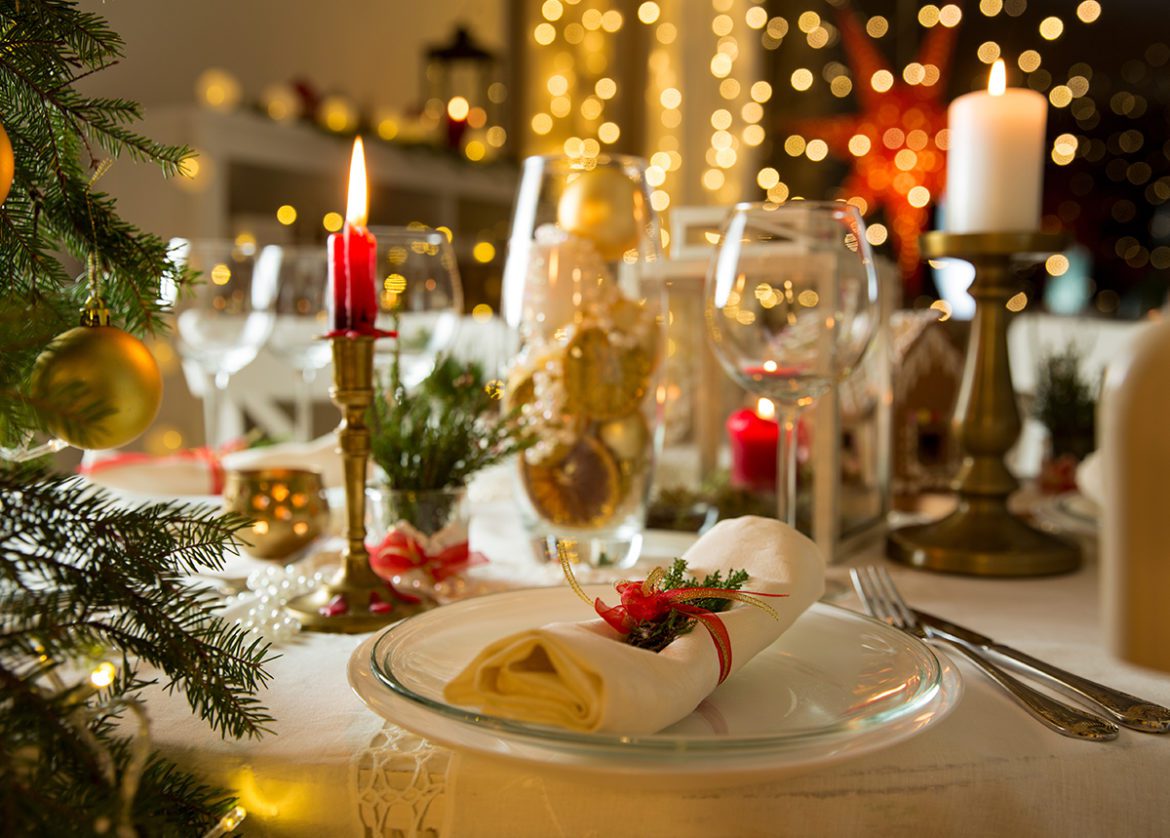THE CUSTOM OF THE CHRISTMAS TREE as we know it today is attributed to Queen Victoria’s husband, Prince Albert, who brought the custom from his native Germany with him upon his marriage. Married 21 years, he died in 1861 from typhoid fever, leaving Victoria a widow for 40 years, during which time she remained in full mourning, wearing only black, and white only as trim or lace.
Notwithstanding, she had a hearty appetite. Meals were a ceremony, beginning with a full breakfast, a light lunch, a resplendent tea served at 4 o’clock and dinner always at 9 in the evening. Christmas especially grand and the preparations began weeks ahead of the most special of all days. The description below was published in The London Mail during Christmas 1899, two years before the Queen’s death, age 81 after a reign of almost 64 years, at the time the longest in British history. Her great-great-granddaughter, Queen Elizabeth II, celebrates her Platinum Jubilee this coming year, 2022, marking 70 years on the throne, the longest monarch to reign in British history.
Preparations for Queen Victoria’s Christmas Dinner
The London Mail, Christmas 1899
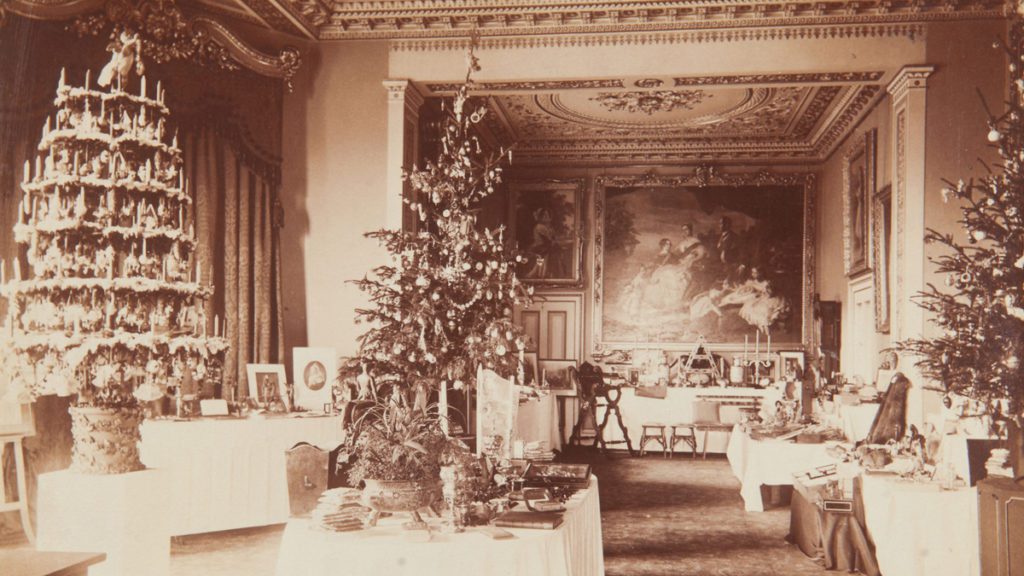 CREDIT: ROYAL COLLECTION TRUST/© HER MAJESTY QUEEN ELIZABETH II 2018
CREDIT: ROYAL COLLECTION TRUST/© HER MAJESTY QUEEN ELIZABETH II 2018
FOR WEEKS BEFORE CHRISTMAS THE COOKS at Windsor are busy preparing the Queen’s dinner for Dec. 25. The principal dishes are all prepared at Windsor, as the kitchen accommodation at Osborne is totally unequal to the task. The Queen’s plum pudding is the triumph of Windsor cookery. In an enormous caldron are placed the usual ingredients, well soaked in fine old Madeira or rum, and all the cooks take their turn in stirring round this huge mass—over 200 puddings are made at Windsor—and occasionally privileged persons are permitted to be present as spectators.
The duly mixed mess is divided into the required number of puddings, which are then boiled for twelve hours. One of these puddings is sent to every one of the Queen’s immediate relatives and descendants. The mincemeat also involves considerable preparation; it is made according to a recipe of King James I.
The ox from whose carcass the baron of beef for the royal table is to be cut is specially fed up, and in Christmas week the enormous joint is handed over to the tender care of the cooks. So big is it that it is placed before a roaring fire at 8 o’clock in the morning and exposed to the heat until 8 at night, when it is pronounced “done”.
Afterward the royal monogram in shredded horse radish is imprinted on the joint, which is served cold. It does not appear on the table but stands on the sideboard. The boar’s head always figures in the menu. Both the German Emperor and the King of Saxony invariably send a boar’s head to the Queen as a Christmas present, but the chef finds that an ordinary bacon head cooks better, so the tusks of the wild boar are fastened on to the head of a tame pig, whose appearance is further “made up” by fierce eyes and painted gums.
The game pie is a huge pasty, in whose bowels is concealed a savory compound of woodcock, game, pork, bacon, eggs, spice &c.
Christmas presents for the Queen frequently take the form of delicacies for the royal table. The Czar of Russia keeps up the custom of his late father and sends a royal sturgeon.
The Grand Duke of Mecklenburg-Schwerin always forwards a splendid paté-defoie-gras encased in pastry and resembling an enormous pork pie. The Crown Princess of Greece sends her grandmamma a case of fine currants and spices and the Empress Frederick some German gingerbread, of which her father was very fond. The Emperor of Austria forwards a dozen bottles of his priceless Tokay wine.
All these presents are sent to Windsor, and forwarded to the Isle of Wight, along with the other Christmas fare. The Royal yacht used for conveying provisions to Osborne when the court is there, is irreverently called “the milk cart” by the young Princes and Princesses.
The Christmas fare is sent across Southampton Water in time to reach Osborne on Christmas eve. Such dishes as are to be served hot are either warmed up or prepared wholly at Osborne.
Dinner on Christmas Day, as on other days, is served at 9 P.M. All the Queen’s splendid gold and silver plate is used. After the most substantial dishes have been disposed of Stilton cheese is served, and then comes dessert, which consisting of all the rare fruits of the season, is served on the famous Sevres set of plates and dishes, valued at £50,000. Music is provided by the royal band.
TO DUPLICATE THE SIX-COURSE MENU with 18 different dishes that was served Christmas Day 1899 to Queen Victoria and her family would be an extravagance beyond reckoning today. You, too, can have a Christmas Dinner fit for a queen with these recipes, adapted from the Royal Family’s feast.
Cousommé a la Monaco
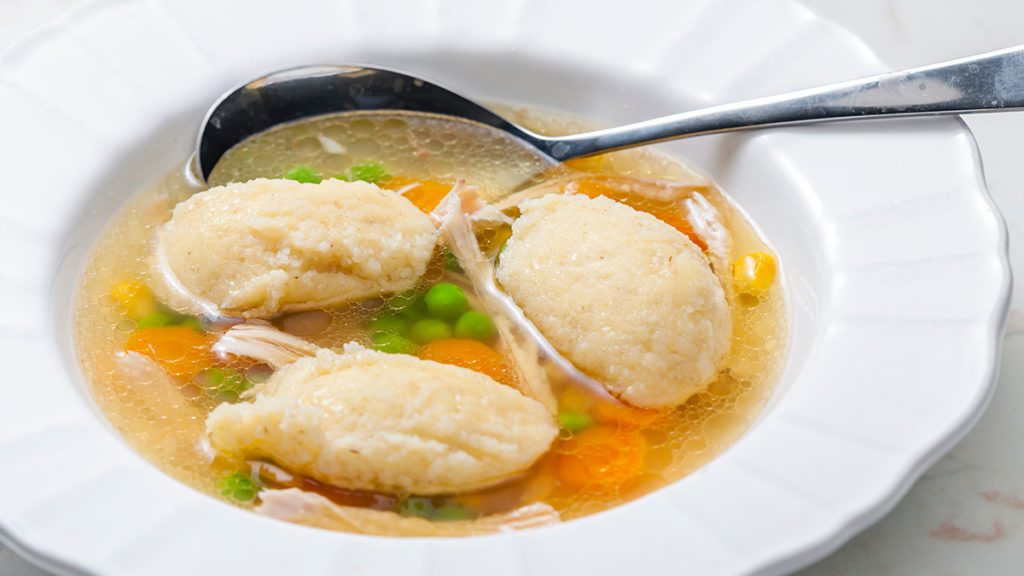
Makes 6 generous servings or 8 one-cup servings
A hearty chicken consommé with carrots, turnips, mushrooms, and green peas topped with a chicken quenelle
In a large saucepan, bring eight cups of chicken consommé to a boil and sprinkle arrowroot, whisking steadily (to avoid clumps) until the broth thickens to the consistency of a chowder. Lower the heat till the soup comes to a gently rolling simmer, stirring so it does not stick to the bottom of the pot. Prepare two large carrots and two large turnips by cutting into small cubes or, using a small vegetable scoop, forming into pea-size rounds. Add the vegetables in the consommé. Add equal parts truffles or mushrooms and green peas. Cook until the vegetables are al dente. Set aside.
To make the chicken-quenelles, cut up 2 whole boneless chicken breasts into 1-inch cubes. Place in the bowl of a food processor and add 1 teaspoon salt and freshly ground pepper, 1 tablespoon grated Parmesan cheese, grated nutmeg to taste, one egg, and one cup of heavy cream. Process thoroughly until it is like a paste.
Return the consommé to the heat and bring to a low rolling boil.
Meanwhile, boil water in a small saucepan and submerge two large tablespoons. Fill one tablespoon with the chicken mixture, forming a dome and compressing it by covering it with the second tablespoon, to form an oblong sphere—in effect, a chicken dumpling. Gently push the mixture into the soup. Repeat until you have used up all the chicken mixture. Poach the quenelles until they are completely cooked and slightly firm. Allow one quenelle per serving.
Serve cousommé a la Monaco immediately. Garnish with dill.
Baron of Beef with Horseradish Cream
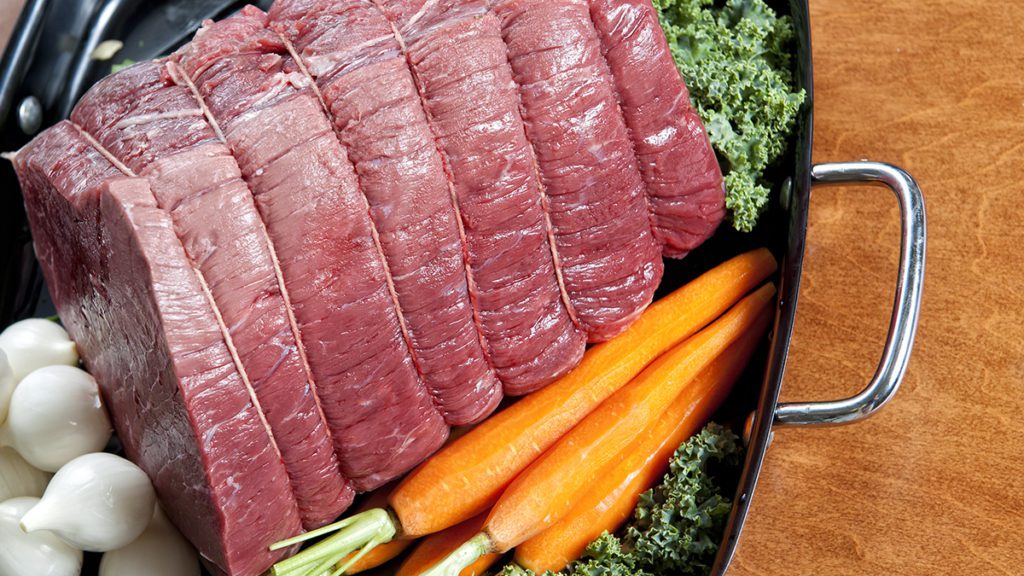
For a 4-lb. roast or larger for 8 people. Consult with your butcher.
A baron of beef includes top sirloin, top butt, and center cut roasts. While not as tender or as expensive as cuts from the rib or loin areas, it is extremely flavorful. The slow cooking is the secret to tenderness.
Adjust the oven rack to place roast in the center. Preheat oven to 325-degrees.
Remove the string from the meat. With a sharp, 2-3/4-inch trimming knife, carefully trim the fat off the meat and set the fat aside. Approximately 15 minutes before you put in the
baron of beef, put the fat in the center of the roasting pan.
Crush garlic or put garlic gloves through a garlic press, add 2 tablespoons of olive oil, one tablespoon of cracked pepper, and one teaspoon each of sea salt, basil, rosemary, sage and/or thyme, onion powder, paprika and a ¼ cup of brown sugar, which helps build the rust on the roast. Rub the mixture thoroughly over the roast.
Prepare quartered potatoes (peeled or unpeeled, according to your preference) and yellow or white onions to scatter around the roast.
Remove the roasting pan (be sure you have oven mitts on!) and place the baron in the middle of the roasting pan, on top of the rendered fat. Place the potatoes and onions around the roast. Insert meat thermometer and plan 15 minutes per pound. For rare to medium rare, remove the baron at 120-130-degrees; for medium to well done, the temperature should be 140-150-degrees. Do check your thermometer carefully, however, as ovens vary. When the baron is done, take out of the oven and cover with aluminum foil and place a clean kitchen towel over the foil. Rest the meat for 15-20 minutes. Save the pan juices for the Yorkshire Pudding. When the meat is ready to serve, slice thinly (and carefully) with a very sharp meat knife.
Yorkshire Pudding
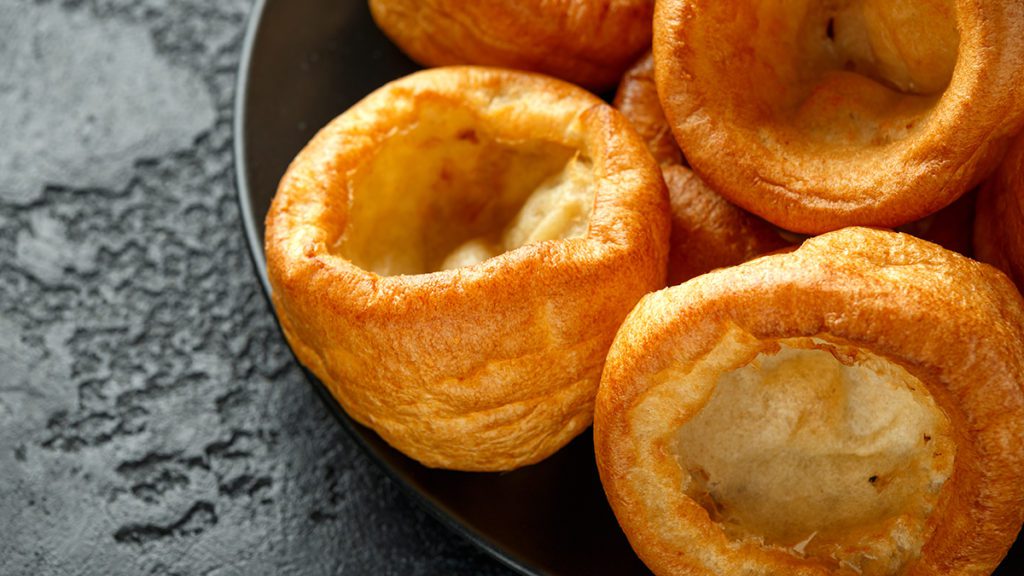
Prepare one hour before the meat comes out of the oven
In a bowl, mix 1-1/2 cups all-purpose flour with ¾ teaspoon salt. Make a well in the mixture and add whisk in ¾ cup milk, then beat 3 eggs into the batter. NOTE: The eggs and milk should be at room temperature. Add three cups of lukewarm water and beat again until the mixture is light and frothy. Set aside for an hour.
After you remove the baron, raise the oven temperature to 400-degrees. Pour the drippings into a 9 x 12-inch baking dish (you may also use a muffin tin for individual servings) and place in the oven until the juices sizzle, then carefully pour the batter over the drippings. Bake for 30-minutes. Do not open the oven while cooking—this is very much like a souffle, and the pudding will fall if you do! When the sides rise and turn brown, the pudding is ready. Serve immediately.
Horseradish Cream
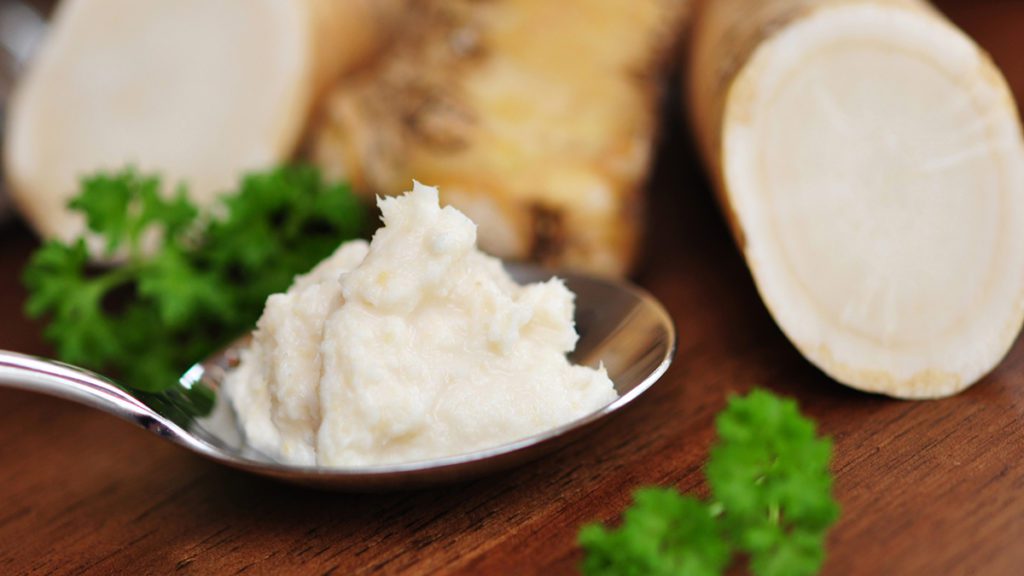
Prepare while the cooked meat is resting
In a small, chilled bowl, beat with an electric mixer ½ cup whipping cream until it forms soft peaks. Fold in 2 tablespoons cream-style prepared horseradish and ½ teaspoon dry mustard. Serve immediately. The Horeseradish Cream will keep in the refrigerator up to 24 hours. You can double the recipe, depending upon how many people you plan to serve.

